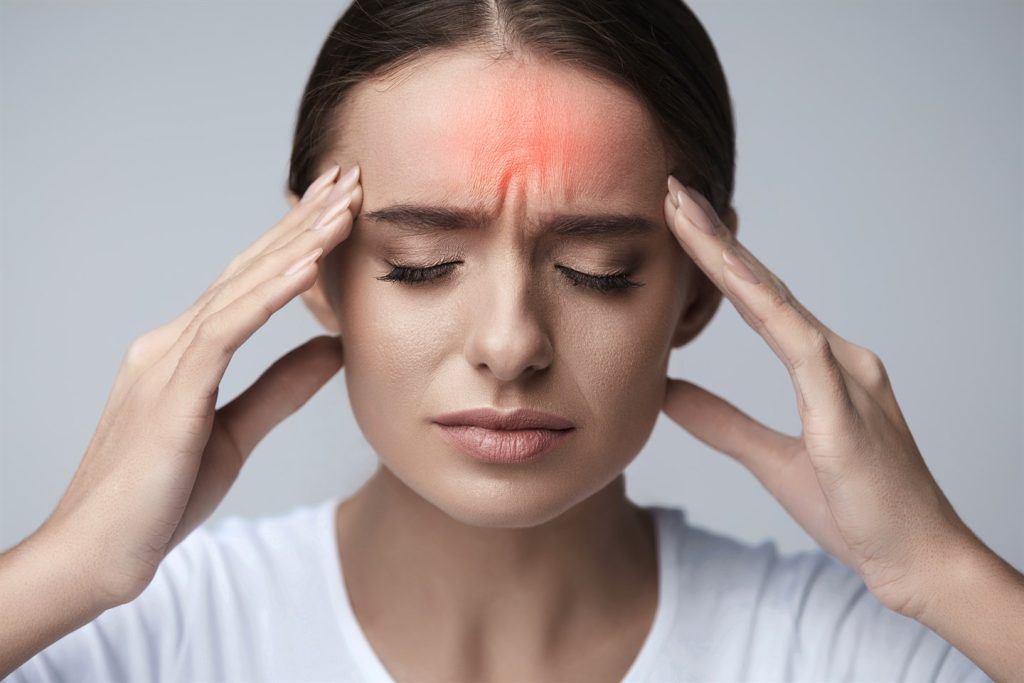The Migraine and Multiple Sclerosis Connection
Updated on October 24, 2023
Medically reviewed by Nicholas R. Metrus, MD
Multiple sclerosis (MS), one of the most common neurological disorders, affects your brain and spinal cord. In its early stages, the symptoms of MS may be similar to or confused with a migraine attack. In addition, there are some studies that question a potential connection between MS and migraines.
How MS and Migraine Are Considered to Be Alike
MS and migraine have some similarities, including:

- They’re both chronic and consist of attacks followed by periods of remission. The majority of patients with multiple sclerosis have a form of the disease called relapsing-remitting MS, which means their disease is characterized by episodes of neurological symptoms and/or disability, known as relapses. And, of course, many with migraines also experience them off and on for extended durations. However, the duration of the neurological symptoms is quite different between these two conditions, lasting from four to 72 in migraine patients and a couple of weeks, on average, with an MS relapse.
- They can involve visual symptoms. Certain MS symptoms, for example, optic neuritis, can sometimes be difficult to distinguish from those of a migraine attack, especially migraine with aura, in which visual symptoms commonly occur. Fortunately, the duration of the visual symptoms (which is shorter in patients with migraine) as well as their characteristics (visual aura usually causes positive phenomena, such as bright flashing lights; a patient with optic neuritis tends to experience decreased/blurry vision with pain during eye movement) help differentiate both conditions.
- They both have triggers that can contribute to attacks. Like those with migraine, people with MS often report triggers for their relapses or attacks, especially stress.
- They affect individuals differently. While people with MS have different levels of disability and rates of progression of their disease, migraineurs often describe unique triggers and symptoms associated with their attacks. In other words, the experience of either issue varies greatly from person to person.1
Video: “Rehabilitation of the patients with Multiple Sclerosis”
MULTIPLE SCLEROSIS. EXERCISES FOR STRETCHING AND IMPROVING BODY FLEXIBILITY AND JOINT MOBILITY, REDUCING TONE
For additional information about Rehabilitation of the patients with Multiple Sclerosis you can watch a video demonstrating exercises and rehabilitation recommendations.
The Problem of Misdiagnosis
Studies have found that migraines occur two to three times more often in people with MS than in the general population. In addition, some symptoms of migraine and MS can be similar, reinforcing the importance of reporting the duration and quality of your symptoms to your healthcare provider in detail.
Due to these potential similarities, a person having migraines may be misdiagnosed with MS. A 2016 study performed at four academic MS centers looked at records of 110 patients who had been misdiagnosed with MS, some believing they had MS for 20 years or more. The most frequent alternate/correct diagnosis was migraine, either alone or in combination with other diagnoses, which was found in 22 percent of the misdiagnosed patients.
Not only are there overlapping symptoms between the two, but both migraine and MS can show abnormalities in your brain as well. When you see a neurologist for your headaches, you’ll typically have magnetic resonance imaging (MRI) of your brain. If you have migraine or MS, it may show brain lesions called white matter lesions or T2 hyperintensities, although the pattern is usually different in each. This is why these lesions need to be interpreted carefully on an MRI and considered along with your symptoms.
Of course, misdiagnosing MS (or vice versa) can be quite anxiety-provoking for a patient, as well as lead to exposure to unnecessary treatments. Scientists are working on techniques to make imaging tests more specific in hopes that fewer cases of misdiagnosis will occur in the future.
MULTIPLE SCLEROSIS. EXERCISES TO STRENGTHEN THE MUSCULOSKELETAL AND MUSCULAR SYSTEM, ENDURANCE
The Link Between MS and Migraine
There does appear to be a connection between MS and migraine, although the relationship has not been fully teased out. At the very least, migraine seems to often co-occur with MS. 2There are a variety of theories about why this link exists, but here’s a look at some of the most common ones.

Migraine as a Symptom of MS
Some experts hypothesize that migraine may be an early symptom of MS, though there isn’t much evidence to support this theory.
A 2012 study found that women with migraines prior to their diagnosis of MS had a 39 percent higher risk of developing MS when compared to the participants without migraines.
Keep in mind, though, the study also showed that the actual chance of developing MS over a 15-year follow-up of the women was 0.47 percent for women with migraines and 0.32 percent for women without migraines. This means that, regardless of whether or not you have migraines, your chance of developing MS is still extremely small (less than 1 percent).
MULTIPLE SCLEROSIS. EXERCISES TO IMPROVE COORDINATION, BALANCE AND GAIT
Underlying Mechanisms
It’s possible that there are some shared underlying mechanisms between the two conditions as well, though there’s little proof to go on.
For instance, research suggests that migraine may be more prevalent in patients with MS because inflammation in the brain that occurs during migraine attacks may expose the myelin (the protective covering around your nerve fibers) to T cells, the “attack” cells, in MS. This could lead to the development of MS-associated demyelinating lesions in the brain.
Another theory suggests that a change in serotonin levels in the brain from migraine attacks could predispose individuals to MS. Again, there is still no scientific evidence that this indeed occurs.
MULTIPLE SCLEROSIS. STRETCHING AND WORKING WITH A MASSAGE ROLLER. ADVANCED STAGE OF REHABILITATION
Summary
In the end, further studies are needed to both confirm the link between MS and migraines and to provide data as to exactly why an association exists. And remember that the chance of developing MS is still very small, regardless of your migraine background.2 Keep on being proactive in your health care and be candid when discussing your concerns or points of confusion with your healthcare provider.
By Colleen Doherty, MD
Dr. Doherty is a board-certified internist and writer living with multiple sclerosis. She is based in Chicago.

Check out the demo version of our sets of exercises for Multiple Sclerosis on YouTube
You can find more information about Multiple Sclerosis in our Blog.
Our website presents the following sets of exercises for the rehabilitation of the patients with Multiple Sclerosis:
-
MULTIPLE SCLEROSIS. EXERCISES FOR STRETCHING AND IMPROVING BODY FLEXIBILITY AND JOINT MOBILITY, REDUCING TONE
-
MULTIPLE SCLEROSIS. EXERCISES TO STRENGTHEN THE MUSCULOSKELETAL AND MUSCULAR SYSTEM, ENDURANCE
-
MULTIPLE SCLEROSIS. EXERCISES TO IMPROVE COORDINATION, BALANCE AND GAIT
-
MULTIPLE SCLEROSIS. STRETCHING AND WORKING WITH A MASSAGE ROLLER. ADVANCED STAGE OF REHABILITATION
Sources
https://www.verywellhealth.com/migraine-and-multiple-sclerosis-connection-1719890
- Tabby D, Majeed MH, Youngman B, Wilcox J. Headache in multiple sclerosis: features and implications for disease management. Int J MS Care. 2013;15(2):73–80. doi:10.7224/1537-2073.2012-035
- Pakpoor J, Handel AE, Giovannoni G, Dobson R, Ramagopalan SV. Meta-Analysis of the Relationship between Multiple Sclerosis and Migraine. PLoS ONE. 2012;7(9). doi:10.1371/journal.pone.0045295
Additional Reading
- Applebee A. The Clinical Overlap of Multiple Sclerosis and Headache. Headache. 2012 Oct;52 Suppl 2:111–6. doi:10.1111/j.1526-4610.2012.02243.x.
- Husain F, Pardo G, Rabadi M. Headache and Its Management in Patients With Multiple Sclerosis. Current Treatment Options in Neurology. 2018 Mar 24;20(4):10. doi:10.1007/s11940-018-0495-4.
- Kister I, Munger KL, Herbert J, Ascherio A. Increased Risk of Multiple Sclerosis Among Women With Migraine in the Nurses’ Health Study II. Multiple Sclerosis Journal. January 2012;18(1):90–7. doi:10.1177%2F1352458511416487.
- Peckel L. Migraine and Multiple Sclerosis: Connection or Coincidence? NeurologyAdvisor. Haymarket Media, Inc. Published January 8, 2018. https://www.neurologyadvisor.com/advisor-channels/headache-migraine-advisor/migraine-and-multiple-sclerosis-connection-or-coincidence/.
- Solomon AJ, Bourdette DN, Cross AH, et al. The Contemporary Spectrum of Multiple Sclerosis Misdiagnosis: A Multicenter Study. Neurology. 2016;87(13):1393–9. doi:10.1212%2FWNL.0000000000003152.

FREQUENTLY ASKED QUESTIONS
1. What are usually the first signs of MS?
Early signs of MS include:
-
-
-
-
- Bladder issues
- Bowel problems
- Difficulty focusing/concentrating
- Dizziness/lack of coordination
- Fatigue
- Muscle spasms
- Pain throughout the body
- Sexual problems
- Speech problems
- Tingling and numbness
- Vision problems
- Weakness
-
-
-
2. What age does MS usually start?
People are typically diagnosed with MS between the ages of 20-40, though it can develop at any age. Late-onset MS can affect people aged 50 and older.
Learn More Multiple Sclerosis (MS): Prevalence and Incidence
3. What does MS do to a man?
Males with MS experience common symptoms such as issues with balance and mobility, pain, vision problems, numbness, and tingling. Research shows that some males with MS have higher rates of low testosterone ( hypogonadism), which may be associated with disease progression.17
4. Can you suddenly get MS?
MS generally starts with a vague symptom that goes away within a few days or weeks. Symptoms may appear suddenly and disappear after the first episode/attack. An attack is when MS symptoms suddenly show up. In order to be diagnosed with MS, you must have had two attacks at least one month apart.
5. What are the four stages of MS?
MS is a progressive disease, and most people with MS follow one of four identified disease courses, including:
-
-
- Clinically isolated syndrome. The first episode of neurological symptoms is caused by demyelination and inflammation in the central nervous system.
- Relapsing-remitting. Clearly defined attacks of new and increasing neurologic symptoms. Attacks are often followed by remission (period of partial or complete recovery) before the next relapse/attack.
- Secondary progressive. People with this form of MS may experience relapses of attacks, followed by partial recovery, but the disease does not disappear between attack cycles.
- Primary progressive. Characterized by worsening neurological function and disability from the onset of symptoms, with no relapses or remission.
-
Learn More What to Know About the Multiple Sclerosis Diagnostic Criteria
6. Is MS higher in men or women?
Females are two to three ties more likely to be diagnosed with MS than males. Sex hormones may play a role in why females develop the disease more often.
7. Does MS affect men differently than women?
Many MS symptoms are experienced by males and females alike, such as problems with balance and walking, vision problems, numbness/tingling, and bladder issues. Males have a higher risk of primary progressive MS and seem to have more neurodegeneration and worse cognitive symptoms (e.g., memory problems, difficulty focusing) than females.






















